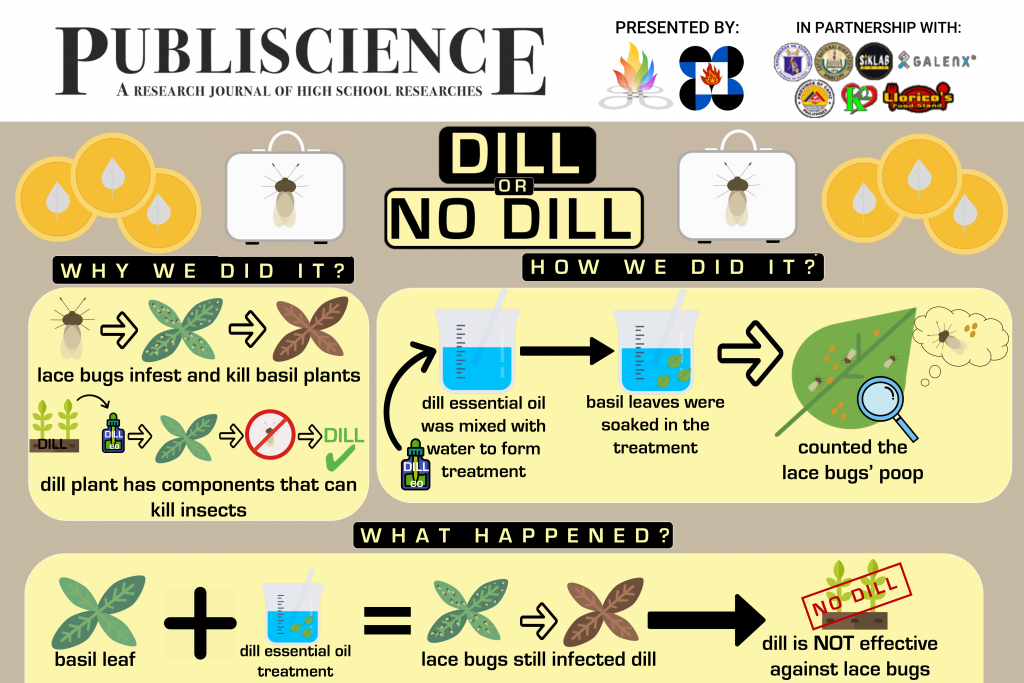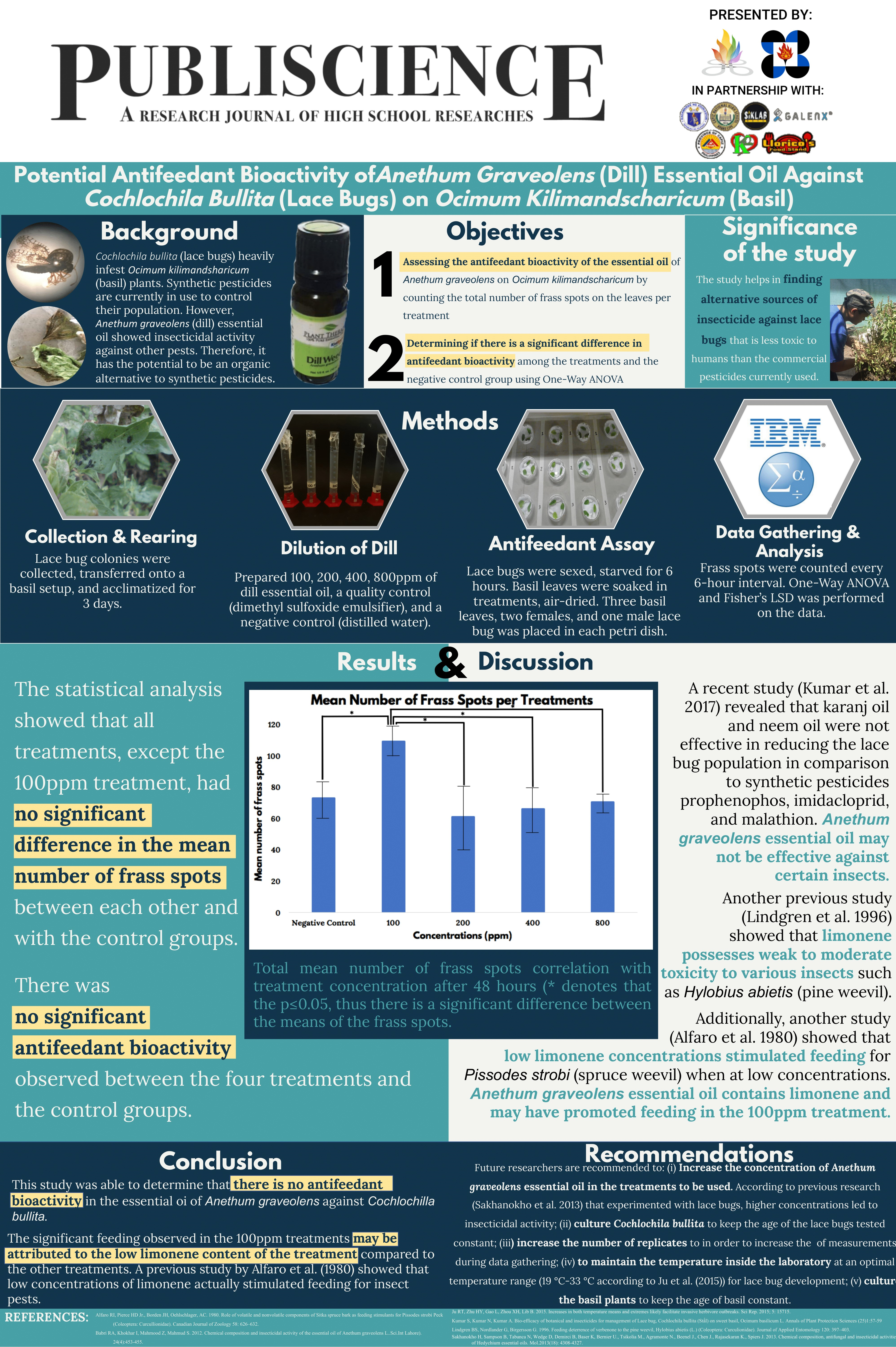Potential antifeedant bioactivity of Anethum graveolens (dill) essential oil against Cochlochila bullita (lace bugs) on Ocimum kilimandscharicum (sweet basil)
GIDEON BENEDICT F. BENDICION1, AARON PHILIP C. DAEL1, SOPHIA KARINA S. GENTEROLA1, ATHENES JOY P. ABAN1, and MA. VICTORIA C. SEREDRICA2
1Philippine Science High School – Western Visayas Campus, Brgy. Bito-on, Jaro, Iloilo City 5000, Department of Science and Technology, Philippines
2Central Philippine University – College of Agriculture and Resources and Environmental Science, Lopez Jaena St. Iloilo City, Philippines 5000
Abstract
Anethum graveolens (dill) has been known to have insecticidal activity on several insect pests. Studies state that components of the essential oil of Anethum graveolens, which are mainly composed of carvones and limonenes, can be used as antifeedant against insect pests. This study used the essential oil of Anethum graveolens in order to determine whether it has potential antifeedant bioactivity against Cochlochila bullita (lace bugs) on Ocimum kilimandscharicum (sweet basil). Three (3) setups containing eighteen (18) Cochlochila bullita were subjected to four concentrations, 100, 200, 400, and 800ppm, of Anethum graveolens essential oil and two control groups for a period of 48 hours. Results showed that there was no significant difference in the number of frass spots observed in 200ppm, 400ppm, and 800ppm, with those of the control groups. The 100ppm concentration had a significantly higher number of frass spots but showed no antifeedant bioactivity. These results indicated that Anethum graveolens’ essential oil does not have antifeedant bioactivity against Cochlochila bullita.
Keywords: antifeedant, lace bugs, Anethum graveolens, essential oil, Ocimum kilimandscharicum


